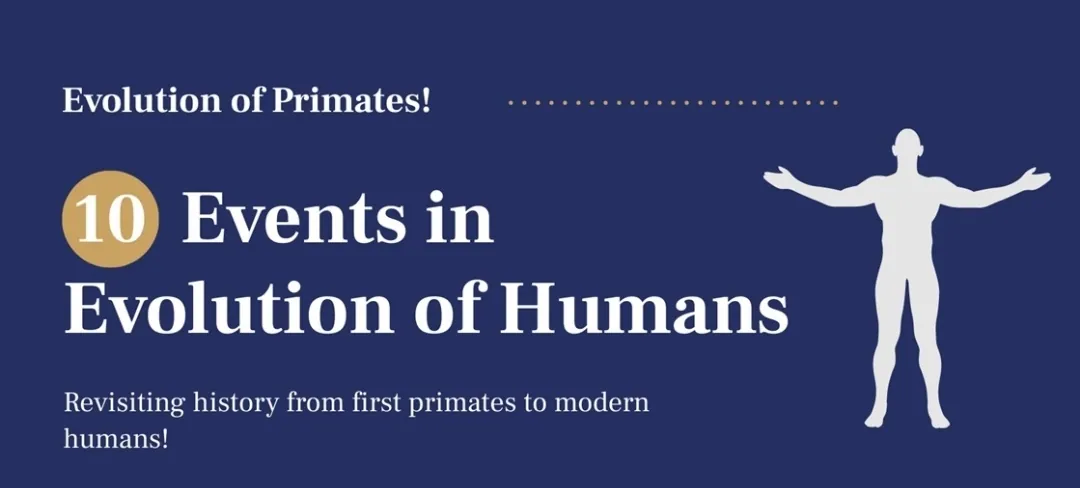Our story as humans is a captivating saga, stretching back millions of years. It’s a tale filled with twists, turns, and remarkable transformations. This article delves into the key events that shaped our evolutionary journey, from humble beginnings to modern marvels.
Before Us: Setting the Stage for Humanity (7 Million Years Ago – 4 Million Years Ago)
Our evolutionary story starts long before the emergence of “Homo,” the genus that includes modern humans. Around 7 million years ago, a branch diverged from the evolutionary tree leading to both humans and chimpanzees, our closest living relatives. This period saw the rise of Dryopithecus and Ramapithecus, ape-like creatures with some key anatomical features that hinted at the evolutionary direction we would take. These features included a slightly more upright posture and potentially the beginnings of bipedalism (walking on two legs).
The Australopithecus Clan: Our Bipedal Ancestors (4 Million Years Ago – 2 Million Years Ago)

The stage was set for the Australopithecines, a diverse group of early hominins (hominin refers to the tribe that includes humans and their extinct relatives) who lived between 4 and 2 million years ago. Australopithecus afarensis, famously represented by the fossil “Lucy,” is a key member of this group. Australopiths displayed a mix of ape-like and human-like features. Their brains were slightly larger than those of apes, and crucially, they walked upright on two legs. This shift towards bipedalism freed up their hands for carrying tools and manipulating their environment, a significant evolutionary leap.
Enter Homo Habilis: The Toolmaker (2.8 Million Years Ago – 1.5 Million Years Ago)
Around 2.8 million years ago, Homo habilis (meaning “handy man”) emerged. Habilis possessed a larger brain than Australopiths and is considered the first hominin to create and use stone tools. These early tools were relatively simple, but their presence marked a turning point, demonstrating a new level of cognitive ability and problem-solving.
Homo Erectus: Upright Posture, Bigger Brains (1.9 Million Years Ago – 70,000 Years Ago)
Homo erectus (“upright man”), appearing around 1.9 million years ago, represented a significant leap forward. Erectus had a larger brain than Habilis, a more robust build, and walked fully upright. They mastered the use of fire, likely for warmth, cooking, and protection from predators. Erectus may have even been the first hominin to leave Africa, venturing into Asia and Europe.
Archaic Homo sapiens: The Dawn of Modernity (700,000 Years Ago – 300,000 Years Ago)
The period between 700,000 and 300,000 years ago is shrouded in some mystery. This era saw the emergence of Archaic Homo sapiens, a group with features transitional between erectus and modern humans. Their brains were similar in size to modern humans, and they may have begun to develop more complex tool technologies.
The Arrival of Homo Sapiens: Our Species Takes Center Stage (300,000 Years Ago – Present)
Homo sapiens (“wise man”), our own species, is estimated to have emerged around 300,000 years ago in Africa. Sapiens possessed several key features that set us apart: a large brain, complex language skills, advanced toolmaking abilities, and the capacity for abstract thought and symbolic expression. These advancements allowed for the development of art, sophisticated hunting techniques, and complex social structures.
The story doesn’t end there. Modern humans migrated out of Africa, populating the entire globe. Over the past 100,000 years, we have witnessed remarkable cultural and technological advancements, culminating in the modern world we inhabit today.
Evolution: A Continuous Process
Human evolution is not a linear progression from primitive to advanced. It’s a branching narrative filled with dead ends and adaptations. Homo neanderthalensis, a close relative of Homo sapiens, co-existed with us for a period before mysteriously disappearing around 40,000 years ago. While the exact reasons remain debated, some evidence suggests interbreeding may have occurred between Neanderthals and early Homo sapiens.
Evolution is also an ongoing process. While the pace of anatomical change has slowed significantly, our genes are constantly adapting to environmental pressures. The future of human evolution remains unwritten, but our ability to understand and manipulate our own biology through genetic technologies raises fascinating questions about what lies ahead.
Unraveling the Mysteries: Exploring Further Aspects of Human Evolution
Our exploration of human evolution has just begun. This section delves deeper into some intriguing aspects of this captivating story:
The Driving Forces Behind Evolution: Why Did We Change?
Several key factors fueled our evolutionary journey:
- Climate Change: Fluctuations in global temperatures and environments forced early hominins to adapt. Bipedalism, for example, may have offered advantages in savanna environments, allowing for efficient travel and foraging over long distances.
- Diet: Changes in diet played a crucial role. The shift towards a more omnivorous diet, including meat consumption, may have provided essential nutrients for brain development in early hominins.
- Natural Selection: Charles Darwin’s theory of natural selection proposes that organisms with traits best suited to their environment are more likely to survive and reproduce, passing those traits on to future generations. In the context of human evolution, this translates to adaptations that enhanced survival and reproductive success.
- Sexual Selection: This theory suggests that certain traits may be favored not just for survival but also for attracting mates. Upright posture and the development of complex language skills could be examples of traits influenced by sexual selection.
The Fossil Record: Pieces of the Puzzle
Fossils are the physical remnants of ancient life, offering invaluable clues about our evolutionary past. The fossil record for human evolution is constantly growing, with new discoveries shedding light on previously unknown hominin species and behaviors. However, the fossil record is also incomplete, with many gaps and missing pieces. Scientists rely on a variety of techniques, including radiometric dating and anatomical analysis, to piece together the evolutionary timeline.
The Rise of Culture: Beyond Biology
Human evolution isn’t just about physical changes. The development of culture, encompassing language, art, technology, and social structures, is another defining aspect of our story. The ability to learn from previous generations and transmit knowledge through cultural means allowed for cumulative advancements, propelling us further along the evolutionary path.
The Future of Human Evolution: Where Do We Go From Here?
As mentioned earlier, human evolution is an ongoing process. Here are some potential areas where future changes might occur:
- Genetic Engineering: The ability to manipulate our own genes raises ethical and social questions, but it also holds the potential to address diseases and enhance human capabilities.
- Brain Evolution: Our understanding of the human brain is still limited. Future advancements in neuroscience might shed light on how our brains might continue to evolve.
- Adaptation to New Environments: As we explore space and potentially colonize other planets, our bodies may need to adapt to survive in these new environments.
Conclusion: A Legacy in the Making
The story of human evolution is a testament to our adaptability, ingenuity, and capacity for change. As we continue to learn from the past and explore the possibilities of the future, we become active participants in the ongoing saga of human evolution.
This article has provided a glimpse into the remarkable journey of our species. Further exploration of paleoanthropology, archaeology, and genetics will continue to unlock the secrets of our past and illuminate the path towards our future.
FAQs: Unveiling More About Human Evolution
Here are some frequently asked questions (FAQs) to complement your understanding of human evolution:
1. Are there any missing links in the human evolutionary chain?
The fossil record is incomplete, with gaps between different hominin species. These gaps are sometimes referred to as “missing links.” However, new discoveries are constantly being made, and scientists are continually working to piece together the complete evolutionary timeline.
2. Did Neanderthals and Homo sapiens ever interact?
Yes, there is evidence to suggest that Neanderthals and Homo sapiens co-existed for a period in Eurasia. Some studies even suggest interbreeding may have occurred between the two species.
3. What is the role of genetics in human evolution?
Our DNA holds the blueprint for our physical and behavioral traits. Changes in genes, caused by mutations and natural selection, drive evolutionary change over generations. The field of genetics is playing an increasingly important role in understanding human evolution by analyzing the DNA of ancient hominins.
4. How does evolution explain the diversity of human races?
Evolutionary adaptations can lead to variations in physical appearance within a species. These variations, such as skin color and hair texture, may have arisen due to adaptations to different environments faced by human populations throughout history.
5. Does evolution disprove the existence of God?
Evolution is a scientific theory that explains the observed changes in living organisms over time. The theory of evolution is independent of religious beliefs. Some religious individuals believe that evolution can coexist with their faith, while others view them as incompatible.
6. What are some ethical concerns surrounding genetic engineering in humans?
Modifying human genes has the potential to introduce unintended consequences. Ethical considerations include who has access to this technology, the potential for misuse, and the possibility of exacerbating social inequalities.
7. Where can I learn more about human evolution?
Numerous resources are available to delve deeper into human evolution. Museums with paleoanthropology exhibits, documentaries, online courses, and popular science books can provide a wealth of information on this fascinating topic.

